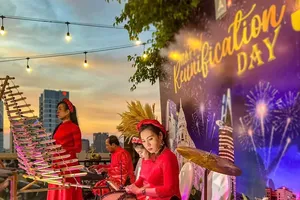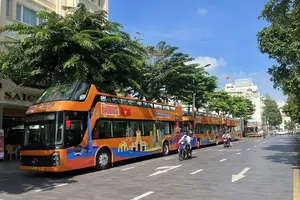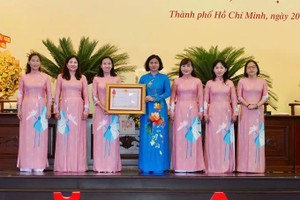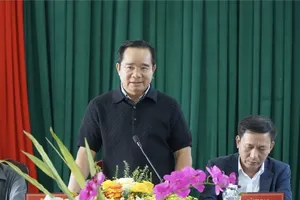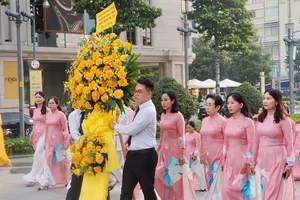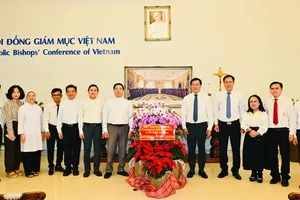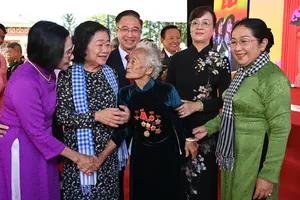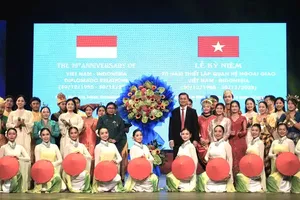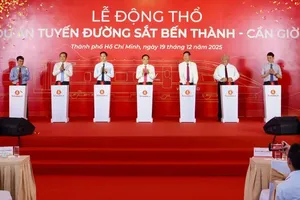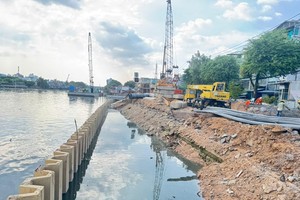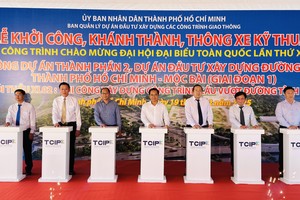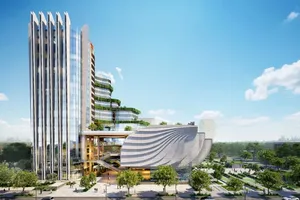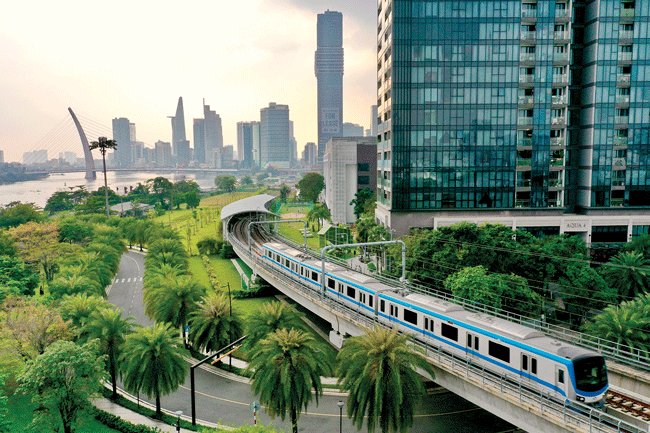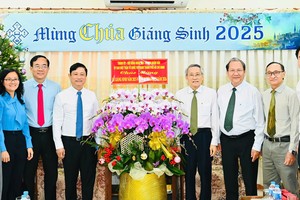
In 2017, the construction of Thu Thiem 2 Bridge necessitated the felling and relocation of 258 green trees on Ton Duc Thang Street in District 1. Among these, 115 were designated for relocation, maintenance, and care.
Vice President of Nong Lam University Dr Tran Dinh Ly recalled that the university campus had ample vacant land at the time and agreed to accommodate the trees for rehabilitation, with the project management board responsible for their care.
The university did receive approximately 120 trees from the Thu Thiem 2 project, including yellow flamboyant, tamarind, and mahogany. These trees were planted throughout the campus, some in the yard, others in nurseries or faculty practice areas, with a concentration on Street 14 leading to the Faculty of Forestry. Over the years, around 70 trees have survived, some now towering with large trunks and expansive canopies, reaching 30m, while others stand at 10-15m.
Head Nguyen Thanh Dien from the Materials Management Department at the university expressed regret over the significant number of trees that did not survive. He explained that the dry soil here demanded meticulous care for the transplanted trees. Furthermore, the horizontal transplanting method, especially for larger trees requiring root balling and cutting large roots, made planting and preservation challenging, necessitating bracing with cables and stakes – supports some trees still wear today.
He revealed, “For about 4 years now, people from the project management board have not come down to care for the trees here anymore”. When queried about the future of these trees, almost a decade after being moved for “nurturing”, the university indicated they were simply planted with no clear information on subsequent plans for relocation.
Similarly, the implementation of Metro Line 1 Project (Ben Thanh – Suoi Tien) from 2014-2017 involved relocating and felling numerous trees to clear the construction path. Attempts to track the fate of these transplanted trees by contacting relevant entities proved frustratingly difficult.
HCMC Greenery Parks Co. Ltd. referred to the HCMC Infrastructure Management Center for responsibility for the matter. The latter’s head then mentioned the project owner – the HCMC Management Authority for Urban Railways. This unit explained that the HCMC People’s Committee had assigned HCMC Greenery Parks Co. Ltd. to handle the relocation and care. In response, this company’s Deputy Director Nguyen Thi Huynh Anh said that the related documents cannot be found as 10 years have passed.
Investigation highlights systemic deficiencies in handling green trees during infrastructure projects and a notable lack of accountability. To date, no unit or individual has faced disciplinary action or compensation requirements for actions or negligence leading to tree felling or damage.
The pressing question for HCMC remains – finding feasible methods for the city to effectively preserve its green trees, mitigate damage and felling to safeguard the living environment for its dwellers.
Assoc Prof Dr Phung Chi Sy, Vice Chairman of the Vietnam Association for Conservation of Nature and Environment (VACNE), pointed out HCMC’s severe lack of green space and its disparate distribution. The average urban green space area, at a mere 0.7-0.9m² per person, falls significantly short of the national standard of 4-7m².
To protect urban trees, management agencies must mandate that project owners conduct thorough surveys, calculations, and consider the optimal approach to minimize felling or relocation. If felling or relocation is unavoidable, project owners must commit to replanting new trees, maintaining them until maturity, and restoring the green area to its original state. Tree relocation and felling, he stressed, must be carried out responsibly, meticulously calculated with the support of experts and scientists.
Dr Truong Van Vinh, Deputy Dean of the Faculty of Forestry at Nong Lam University, echoed the need for HCMC to carefully balance the interests of sacrificing green trees for infrastructure, emphasizing careful calculations to maximize tree preservation. Achieving this requires accurate and comprehensive data on street conditions and planning. Without reliable data, effective decisions are severely hampered, potentially leading to widespread felling and relocation.
He also underscored the need for thorough research into urban tree species suitable for planting and appropriate relocation methods. Many current street trees, like yellow flamboyant and tamarind, grow quickly but are prone to splitting and breaking, making them unsafe as well as difficult and costly to maintain after relocation.
Prof DrSc Le Huy Ba, former Director of the Institute of Science Technology and Environmental Management at the Industrial University of HCMC, stated unequivocally: “We already have a law protecting urban green trees. If green trees are damaged, functional forces must enforce regulations. Serious handling will create a crucial disincentive for society regarding behavior towards green trees.”
Numerous streets in District 11 have seen green trees felled in large numbers during the process of sidewalk renovation construction. On Han Hai Nguyen Street, 29 trees were felled by the functional unit, including 15 Type 3 and 14 Type 2 trees, with plans to fell 2 more Type 3 and 11 Type 2 trees subsequently. On Tran Quy Street, 5 Type 1 trees and 1 Type 2 tree were mandatorily felled.
On Le Dai Hanh Street (the section from Nguyen Chi Thanh to 3 Thang 2 Streets), the plan includes felling 2 Type 3 trees; on the section from 3 Thang 2 to Binh Thoi Streets, 5 trees have been felled (1 Type 1, 4 Type 2).
Specifically on Lu Gia Street, 3 Type 3 trees were felled, with plans for 3 more of the same type. For Nguyen Thi Nho Street, the plan is to fell 3 Type 2 trees. Extensive felling also occurred on Ly Thuong Kiet Street, with 7 Type 2 trees cut down.
